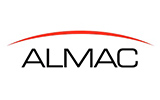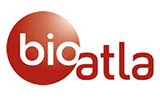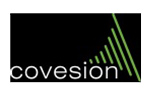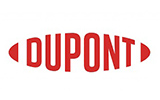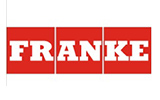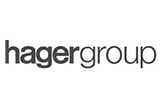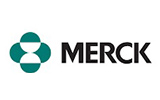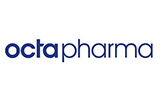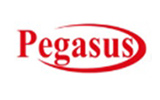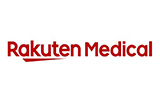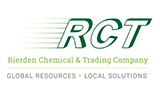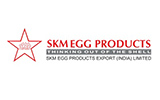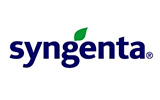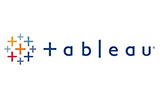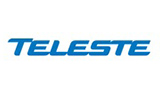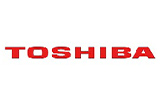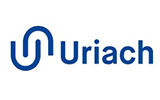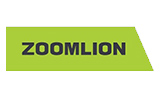1. Research Framework
1.1. Research Objective
1.2. Product Overview
1.3. Market Segmentation
2. Executive Summary
3. Global Programmable Application Specific Integrated Circuit (ASIC) Market Insights
3.1. Industry Value Chain Analysis
3.2. DROC Analysis
3.2.1. Growth Drivers
3.2.1.1. Increasing Demand for Customized Solutions
3.2.1.2. Advancements in Semiconductor Technology
3.2.1.3. Growth of AI and Machine Learning
3.2.2. Restraints
3.2.2.1. High Development Costs
3.2.2.2. Long Design and Fabrication Cycles
3.2.3. Opportunities
3.2.3.1. IoT and Edge Computing
3.2.3.2. Automotive Industry Innovations
3.2.4. Challenges
3.2.4.1. Risk of Obsolescence
3.2.4.2. Security Vulnerabilities
3.3. Technological Advancements/Recent Developments
3.4. Regulatory Framework
3.5. Porter's Five Forces Analysis
3.5.1. Bargaining Power of Suppliers
3.5.2. Bargaining Power of Buyers
3.5.3. Threat of New Entrants
3.5.4. Threat of Substitutes
3.5.5. Intensity of Rivalry
4. Global Programmable Application Specific Integrated Circuit (ASIC) Market Marketing Strategies
5. Global Programmable Application Specific Integrated Circuit (ASIC) Market Overview
5.1. Market Size & Forecast, 2025-2033
5.1.1. By Value (USD Billion)
5.2. Market Share & Forecast
5.2.1. By Product Type
5.2.1.1. Full-Custom
5.2.1.2. Semi-Custom
5.2.1.2.1. Array-based
5.2.1.2.2. Cell-based
5.2.1.3. Programmable
5.2.2. By End User
5.2.2.1. Consumer Electronics
5.2.2.2. Automotive
5.2.2.3. Industrial
5.2.2.4. Biomedical & Healthcare
5.2.2.5. Telecommunications
5.2.2.6. Others (Smart Building)
5.2.3. By Region
5.2.3.1. North America
5.2.3.2. Europe
5.2.3.3. Asia Pacific (APAC)
5.2.3.4. Latin America (LATAM)
5.2.3.5. Middle East and Africa (MEA)
6. North America Programmable Application Specific Integrated Circuit (ASIC) Market
6.1. Market Size & Forecast, 2025-2033
6.1.1. By Value (USD Billion)
6.2. Market Share & Forecast
6.2.1. By Product Type
6.2.2. By End User
6.2.3. By Country
6.2.3.1. United States
6.2.3.1.1. By Product Type
6.2.3.1.2. By End User
6.2.3.2. Canada
6.2.3.2.1. By Product Type
6.2.3.2.2. By End User
7. Europe Programmable Application Specific Integrated Circuit (ASIC) Market
7.1. Market Size & Forecast, 2025-2033
7.1.1. By Value (USD Billion)
7.2. Market Share & Forecast
7.2.1. By Product Type
7.2.2. By End User
7.2.3. By Country
7.2.3.1. Germany
7.2.3.1.1. By Product Type
7.2.3.1.2. By End User
7.2.3.2. United Kingdom
7.2.3.2.1. By Product Type
7.2.3.2.2. By End User
7.2.3.3. Italy
7.2.3.3.1. By Product Type
7.2.3.3.2. By End User
7.2.3.4. France
7.2.3.4.1. By Product Type
7.2.3.4.2. By End User
7.2.3.5. Spain
7.2.3.5.1. By Product Type
7.2.3.5.2. By End User
7.2.3.6. Belgium
7.2.3.6.1. By Product Type
7.2.3.6.2. By End User
7.2.3.7. Russia
7.2.3.7.1. By Product Type
7.2.3.7.2. By End User
7.2.3.8. The Netherlands
7.2.3.8.1. By Product Type
7.2.3.8.2. By End User
7.2.3.9. Rest of Europe
7.2.3.9.1. By Product Type
7.2.3.9.2. By End User
8. Asia Pacific Programmable Application Specific Integrated Circuit (ASIC) Market
8.1. Market Size & Forecast, 2025-2033
8.1.1. By Value (USD Billion)
8.2. Market Share & Forecast
8.2.1. By Product Type
8.2.2. By End User
8.2.3. By Country
8.2.3.1. China
8.2.3.1.1. By Product Type
8.2.3.1.2. By End User
8.2.3.2. India
8.2.3.2.1. By Product Type
8.2.3.2.2. By End User
8.2.3.3. Japan
8.2.3.3.1. By Product Type
8.2.3.3.2. By End User
8.2.3.4. South Korea
8.2.3.4.1. By Product Type
8.2.3.4.2. By End User
8.2.3.5. Australia & New Zealand
8.2.3.5.1. By Product Type
8.2.3.5.2. By End User
8.2.3.6. Indonesia
8.2.3.6.1. By Product Type
8.2.3.6.2. By End User
8.2.3.7. Malaysia
8.2.3.7.1. By Product Type
8.2.3.7.2. By End User
8.2.3.8. Singapore
8.2.3.8.1. By Product Type
8.2.3.8.2. By End User
8.2.3.9. Vietnam
8.2.3.9.1. By Product Type
8.2.3.9.2. By End User
8.2.3.10. Rest of APAC
8.2.3.10.1. By Product Type
8.2.3.10.2. By End User
9. Latin America Programmable Application Specific Integrated Circuit (ASIC) Market
9.1. Market Size & Forecast, 2025-2033
9.1.1. By Value (USD Billion)
9.2. Market Share & Forecast
9.2.1. By Product Type
9.2.2. By End User
9.2.3. By Country
9.2.3.1. Brazil
9.2.3.1.1. By Product Type
9.2.3.1.2. By End User
9.2.3.2. Mexico
9.2.3.2.1. By Product Type
9.2.3.2.2. By End User
9.2.3.3. Argentina
9.2.3.3.1. By Product Type
9.2.3.3.2. By End User
9.2.3.4. Peru
9.2.3.4.1. By Product Type
9.2.3.4.2. By End User
9.2.3.5. Rest of LATAM
9.2.3.5.1. By Product Type
9.2.3.5.2. By End User
10. Middle East and Africa Programmable Application Specific Integrated Circuit (ASIC) Market
10.1. Market Size & Forecast, 2025-2033
10.1.1. By Value (USD Billion)
10.2. Market Share & Forecast
10.2.1. By Product Type
10.2.2. By End User
10.2.3. By Country
10.2.3.1. Saudi Arabia
10.2.3.1.1. By Product Type
10.2.3.1.2. By End User
10.2.3.2. UAE
10.2.3.2.1. By Product Type
10.2.3.2.2. By End User
10.2.3.3. Qatar
10.2.3.3.1. By Product Type
10.2.3.3.2. By End User
10.2.3.4. Kuwait
10.2.3.4.1. By Product Type
10.2.3.4.2. By End User
10.2.3.5. South Africa
10.2.3.5.1. By Product Type
10.2.3.5.2. By End User
10.2.3.6. Nigeria
10.2.3.6.1. By Product Type
10.2.3.6.2. By End User
10.2.3.7. Algeria
10.2.3.7.1. By Product Type
10.2.3.7.2. By End User
10.2.3.8. Rest of MEA
10.2.3.8.1. By Product Type
10.2.3.8.2. By End User
11. Competitive Landscape
11.1. List of Key Players and Their Offerings
11.2. Global Programmable Application Specific Integrated Circuit (ASIC) Company Market Share Analysis, 2023
11.3. Competitive Benchmarking, By Operating Parameters
11.4. Key Strategic Developments (Mergers, Acquisitions, Partnerships, etc.)
12. Impact of Escalating Geopolitical Tensions on Global Programmable Application Specific Integrated Circuit (ASIC) Market
13. Company Profiles (Company Overview, Financial Matrix, Competitive Landscape, Key Personnel, Key Competitors, Contact Address, Strategic Outlook, and SWOT Analysis)
13.1. TSMC
13.2. Intel
13.3. Samsung
13.4. GlobalFoundries
13.5. MediaTek
13.6. Broadcom
13.7. Qualcomm
13.8. Xilinx
13.9. AMD
13.10. Nvidia
13.11. ASIX Electronics
13.12. STMicroelectronics
13.13. Other Prominent Players
14. Key Strategic Recommendations
15. Research Methodology
15.1. Qualitative Research
15.1.1. Primary & Secondary Research
15.2. Quantitative Research
15.3. Market Breakdown & Data Triangulation
15.3.1. Secondary Research?
15.3.2. Primary Research
15.4. Breakdown of Primary Research Respondents, By Region
15.5. Assumptions & Limitations
*Financial information of non-listed companies can be provided as per availability.
**The segmentation and the companies are subject to modifications based on in-depth secondary research for the final deliverable.


